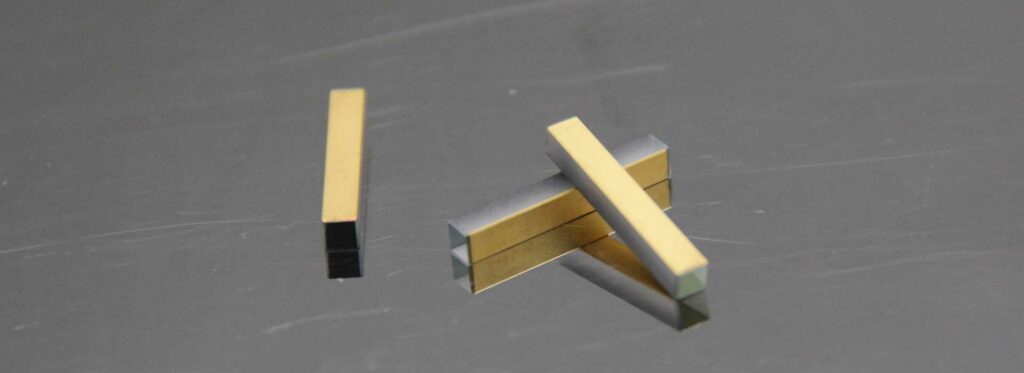In the preceding article, we presented five out of the ten major uses of BBO crystals. These applications encompassed SHG, OPO, electro-optic modulator, SFG, and OPA. In this article, we will explore the remaining five applications.
6. Terahertz Generation
Terahertz waves are electromagnetic waves with frequencies ranging from 0.1 to 10 terahertz (THz) or wavelengths ranging from 30 to 3000 micrometers. This portion of the electromagnetic spectrum is often referred to as the terahertz (THz) or submillimeter wave region. In this chapter, we will explore the generation of terahertz waves using BBO crystals and discuss their applications in various fields, such as imaging, sensing, and communication.
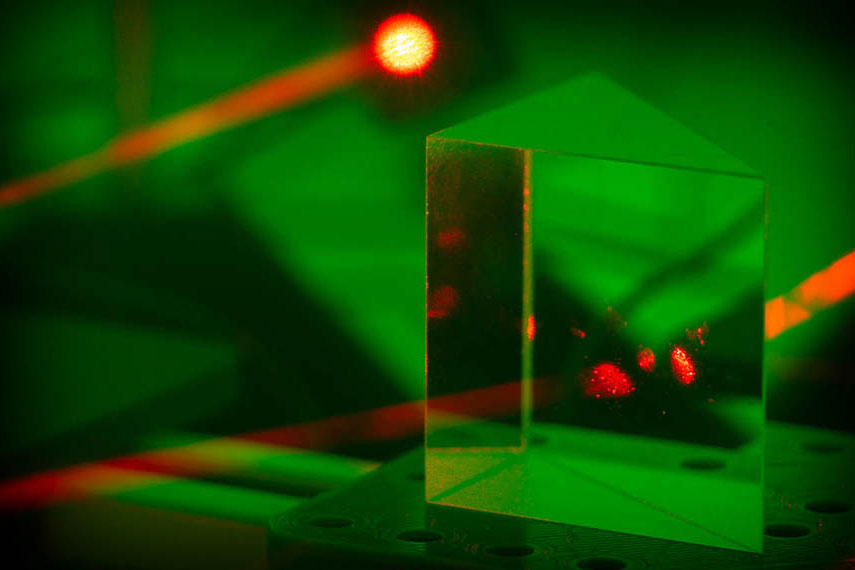
The generation of terahertz waves using BBO crystals involves nonlinear optical processes that exploit the unique properties of these crystals. BBO crystal have a wide transparency range from ultraviolet to infrared wavelengths, making them suitable for terahertz wave generation. The process typically involves the interaction of an intense laser beam with a BBO crystal to generate terahertz radiation through a variety of mechanisms.
One common technique for terahertz generation is optical rectification. In this process, a strong laser pulse is focused onto a BBO crystal, and due to the nonlinear properties of the crystal, the intense electric field of the laser pulse induces a dipole moment, resulting in the emission of terahertz waves. The frequency of the generated terahertz waves is determined by the properties of the laser pulse, such as its wavelength and duration.
Another technique for terahertz generation is difference frequency generation (DFG), which involves the interaction of two laser beams with different frequencies. One laser beam, known as the pump beam, is typically at a shorter wavelength, while the other laser beam, known as the signal beam, is at a longer wavelength. When these two laser beams intersect in a BBO crystal, their electric fields combine and create an interference pattern that leads to the generation of terahertz waves at the frequency difference between the pump and signal beams.
Terahertz waves generated using BBO crystal possess several unique properties that make them attractive for a wide range of applications. They have excellent penetration capabilities, allowing them to pass through various materials, such as clothing, paper, and plastics, while being non-ionizing and non-destructive. This property makes terahertz waves suitable for imaging applications, particularly in areas where X-rays may be hazardous or insufficient, such as non-destructive testing, medical imaging, and security screening.
In imaging applications, terahertz waves can provide valuable information about the internal structure and composition of objects. Terahertz imaging techniques, such as terahertz time-domain spectroscopy (THz-TDS) and terahertz computed tomography (THz-CT), enable the visualization of concealed objects, identification of hidden defects, and mapping of chemical composition. These imaging techniques have applications in areas such as airport security, art restoration, pharmaceutical analysis, and quality control in manufacturing.
Terahertz waves also find application in sensing and spectroscopy. The unique spectral range of terahertz waves allows for the investigation of molecular vibrations and rotational transitions, providing valuable information about chemical composition and molecular dynamics. Terahertz spectroscopy techniques, such as terahertz spectroscopy and terahertz time-resolved spectroscopy, have applications in fields such as pharmaceutical analysis, environmental monitoring, and material characterization.
Moreover, terahertz waves have shown potential in communication systems. The wide bandwidth of terahertz waves enables high data transmission rates, making them suitable for future wireless communication networks. Terahertz communication systems have the potential to offer ultra-fast data transfer, improved security, and reduced interference compared to existing wireless technologies. However, challenges such as atmospheric absorption and signal attenuation need to be addressed for practical implementation.
In conclusion, terahertz wave generation using BBO crystals offers a powerful tool for various applications in imaging, sensing, and communication. The unique properties of terahertz waves, such as their non-ionizing nature and excellent penetration capabilities, make them highly attractive for non-destructive imaging and sensing. Terahertz waves generated using BBO crystals enable the visualization of concealed objects, identification of hidden defects, and the study of molecular vibrations. The potential of terahertz waves in communication systems also opens up new possibilities for high-speed wireless data transmission. Continued research and development in terahertz generation using BBO crystals will further enhance their applications in cutting-edge technologies.
7. Nonlinear Optical Switching
Nonlinear optical switching is a process that uses the non-linear optical properties of materials, such as BBO crystals, to control the transmission of light. In this chapter, we will explain the physics of nonlinear optical switching, its advantages, and its applications in various fields such as telecommunications, computing, and sensing.
Nonlinear optical switching is a type of optical switching that involves the use of non-linear optical materials such as BBO crystals to modulate the intensity and phase of light. The process involves the interaction of the electric fields of the input beam, which induces a dipole moment in the medium, leading to the transmission or reflection of the light. The efficiency of nonlinear optical switching is dependent on the crystal orientation, thickness, and polarization of the input beam.
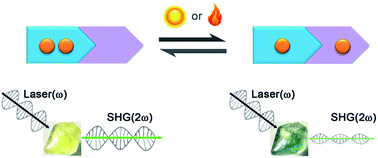
The advantages of nonlinear optical switching using BBO crystals are its high speed, high contrast ratio, and low power consumption. BBO crystals have a high non-linear coefficient, which makes them highly efficient in switching the transmission and reflection of light. BBO crystals have a high contrast ratio, which makes them suitable for high-speed modulation of light. BBO crystals have a low power consumption, which makes them suitable for low-power optical switching applications.
Nonlinear optical switching using BBO crystals finds applications in various fields such as telecommunications, computing, and sensing. In telecommunications, nonlinear optical switching is used for various applications such as wavelength conversion, signal regeneration, and all-optical routing. In wavelength conversion, nonlinear optical switching is used to convert the wavelength of a signal to a different frequency, which enables the transmission of the signal over longer distances without the need for optical amplification. In signal regeneration, nonlinear optical switching is used to regenerate the signal by reducing the noise and distortion. In all-optical routing, nonlinear optical switching is used to route the signal without the need for electronic processing.
In computing, nonlinear optical switching is used for various applications such as optical logic gates, all-optical memories, and optical interconnects. In optical logic gates, nonlinear optical switching is used to perform logical operations, such as AND, OR, and NOT, by controlling the transmission and reflection of light. In all-optical memories, nonlinear optical switching is used to store and retrieve information in optical form. In optical interconnects, nonlinear optical switching is used to transmit and route information between different components in a computer, such as processors and memory.
In sensing, nonlinear optical switching is used for various applications such as chemical sensing, biosensing, and environmental sensing. In chemical sensing, nonlinear optical switching is used to detect the presence and concentration of chemical species, such as gases and pollutants, by measuring the absorption and reflection of light. In biosensing, nonlinear optical switching is used to detect the presence and concentration of biological molecules, such as proteins and DNA, by measuring the surface properties and vibrations of the molecules. In environmental sensing, nonlinear optical switching is used to monitor and detect environmental parameters, such as temperature and pressure, by measuring the transmission and reflection of light.
In conclusion, nonlinear optical switching using BBO crystals is a process that uses the non-linear optical properties of materials to control the transmission of light. Nonlinear optical switching using BBO crystals has several advantages, such as high speed, high contrast ratio, and low power consumption. Nonlinear optical switching using BBO crystals finds applications in various fields, such as telecommunications, computing, and sensing. Understanding the physics and applications of nonlinear optical switching using BBO crystals is crucial for exploring their potential in cutting-edge technologies.
8. Quantum Entanglement and BBO Crystals
Quantum entanglement is a phenomenon in which two or more particles are linked together in such a way that the state of one particle is correlated with the state of the other particles, even if they are separated by large distances. In this chapter, we will explain the physics of quantum entanglement, its advantages, and its applications in various fields such as quantum cryptography and quantum teleportation, using BBO crystals as a key component.
Quantum entanglement occurs when two or more particles, such as photons, electrons, or atoms, interact in such a way that their properties become correlated. This correlation exists even if the particles are separated by large distances, and any change in the state of one particle will instantaneously affect the state of the other particles. The phenomenon of quantum entanglement is one of the key features of quantum mechanics, and it has been observed in various experiments.
The advantages of quantum entanglement using BBO crystals are its high fidelity, high speed, and high security. BBO crystals can generate entangled photon pairs through a process called spontaneous parametric down-conversion (SPDC), where a pump photon generates two entangled photons, signal and idler, that have opposite polarizations and are energy- and momentum-conserving. The entangled photon pairs have high fidelity, meaning that they are highly correlated, even if they are separated by large distances. The entangled photon pairs have high speed, meaning that they can be generated and transmitted at high rates. The entangled photon pairs have high security, meaning that they are immune to eavesdropping attacks.
Quantum entanglement using BBO crystals finds applications in various fields such as quantum cryptography and quantum teleportation. In quantum cryptography, entangled photon pairs are used for secure communication between two parties. In quantum key distribution (QKD), entangled photon pairs are used to establish a shared secret key between two parties, which can be used for secure communication. The security of QKD is based on the principles of quantum mechanics, which guarantee that any attempt to eavesdrop on the communication will be detected by the parties.

Quantum entanglement using BBO crystal finds applications in various fields such as quantum cryptography and quantum teleportation. In quantum cryptography, entangled photon pairs are used for secure communication between two parties. In quantum key distribution (QKD), entangled photon pairs are used to establish a shared secret key between two parties, which can be used for secure communication. The security of QKD is based on the principles of quantum mechanics, which guarantee that any attempt to eavesdrop on the communication will be detected by the parties.
In quantum teleportation, entangled photon pairs are used to transmit the state of a quantum system from one location to another without physically transporting the system. The process involves the measurement of the quantum state of one of the entangled photons and the transmission of the measurement result to the other location, where the state of a third photon is reconstructed based on the measurement result and the state of the other entangled photon. Quantum teleportation has potential applications in quantum computing and quantum communication.
In conclusion, quantum entanglement using BBO crystal is a phenomenon in which two or more particles are linked together in such a way that the state of one particle is correlated with the state of the other particles, even if they are separated by large distances. Quantum entanglement using BBO crystals has several advantages, such as high fidelity, high speed, and high security. Quantum entanglement using BBO crystals finds applications in various fields, such as quantum cryptography and quantum teleportation. Understanding the physics and applications of quantum entanglement using BBO crystals is crucial for exploring their potential in cutting-edge technologies.
9. BBO Crystals in High-Energy Physics
BBO crystals are also used in high-energy physics experiments, where they are used for various applications such as beam diagnostics, laser synchronization, and particle detection. In this chapter, we will explain the physics of BBO crystals in high-energy physics, its advantages, and its applications in various high-energy physics experiments.
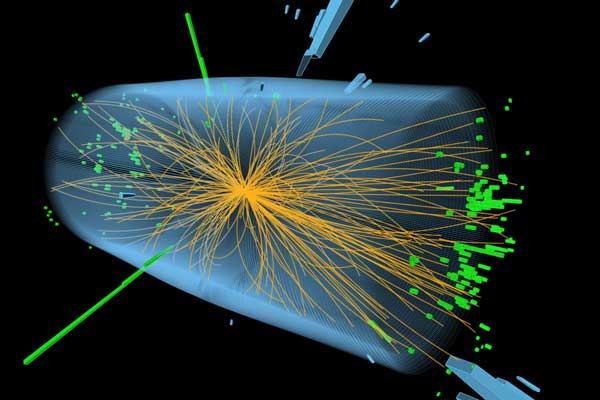
BBO crystals are used in high-energy physics experiments as a key component in various applications such as beam diagnostics, laser synchronization, and particle detection. In beam diagnostics, BBO crystals are used to measure the properties of charged particle beams, such as their energy, position, and profile. BBO crystals are used to generate coherent synchrotron radiation, which is used to measure the energy and position of the charged particle beam. BBO crystals are also used to generate terahertz radiation, which is used to measure the profile of the charged particle beam.
In laser synchronization, BBO crystals are used to synchronize the timing of ultrafast laser pulses with the timing of charged particle beams. BBO crystals are used to generate electro-optic pulses, which can be used to modulate the phase and amplitude of ultrafast laser pulses. The modulated laser pulses are then used to accelerate charged particle beams in laser wakefield accelerators, which have potential applications in high-energy physics and medical imaging.
In particle detection, BBO crystals are used as detectors of charged particles, such as electrons and positrons. BBO crystals are used as scintillators, which emit light when they are hit by charged particles. The emitted light is then detected by photomultiplier tubes, which convert the light into an electrical signal. BBO crystals are also used as Cherenkov radiators, which emit light when charged particles move faster than the speed of light in the medium.
The advantages of BBO crystals in high-energy physics are their high efficiency, high speed, and high radiation hardness. BBO crystals have a high non-linear coefficient, which makes them highly efficient in generating coherent synchrotron radiation and terahertz radiation. BBO crystals also have a high damage threshold, which makes them suitable for high-power laser applications. BBO crystals have a wide transparency range, which makes them suitable for detecting charged particles over a broad spectral range.
BBO crystals have been used in various high-energy physics experiments, such as synchrotron radiation experiments, laser wakefield acceleration experiments, and particle detection experiments. In synchrotron radiation experiments, BBO crystals are used to measure the properties of charged particle beams in synchrotron radiation facilities, which are used for various applications such as X-ray diffraction and protein crystallography. In laser wakefield acceleration experiments, BBO crystals are used to synchronize the timing of ultrafast laser pulses with the timing of charged particle beams, which has potential applications in high-energy physics and medical imaging. In particle detection experiments, BBO crystals are used to detect charged particles, which has potential applications in particle physics and medical imaging.
In conclusion, BBO crystals are a key component in various high-energy physics experiments, where they are used for various applications such as beam diagnostics, laser synchronization, and particle detection. BBO crystals have several advantages, such as high efficiency, high speed, and high radiation hardness. BBO crystals have been used in various high-energy physics experiments, such as synchrotron radiation experiments, laser wakefield acceleration experiments, and particle detection experiments. Understanding the physics and applications of BBO crystals in high-energy physics is crucial for exploring their potential in cutting-edge technologies.
10. BBO Crystals in Biomedical Imaging
BBO crystals are also used in biomedical imaging, where they are used for various applications such as second harmonic generation microscopy, coherent anti-Stokes Raman scattering microscopy, and optical coherence tomography. In this chapter, we will explain the physics of BBO crystals in biomedical imaging, its advantages, and its applications in various biomedical imaging techniques.
BBO crystals are used in biomedical imaging as a key component in various applications such as second harmonic generation microscopy (SHG), coherent anti-Stokes Raman scattering (CARS) microscopy, and optical coherence tomography (OCT). In SHG microscopy, BBO crystals are used to generate second harmonic signals, which are used to image biological tissues and structures. In CARS microscopy, BBO crystals are used to generate anti-Stokes signals, which are used to image the vibrational properties of biological molecules. In OCT, BBO crystals are used as nonlinear optical mirrors, which are used to generate low-coherence light sources for imaging biological tissues.
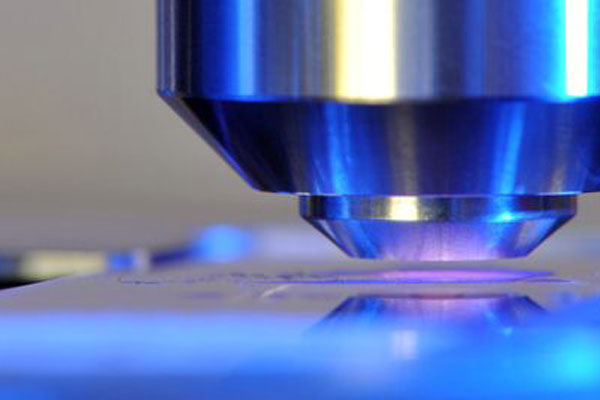
The advantages of BBO crystals in biomedical imaging are their high resolution, high sensitivity, and non-invasiveness. BBO crystals have a high non-linear coefficient, which makes them highly efficient in generating second harmonic signals and anti-Stokes signals. BBO crystals also have a high damage threshold, which makes them suitable for high-power laser applications. BBO crystals have a wide transparency range, which makes them suitable for imaging biological tissues over a broad spectral range.
BBO crystals have been used in various biomedical imaging techniques, such as SHG microscopy, CARS microscopy, and OCT. In SHG microscopy, BBO crystals are used to image collagen fibers in biological tissues, which has potential applications in tissue engineering and wound healing. In CARS microscopy, BBO crystals are used to image lipid droplets, which has potential applications in studying obesity and metabolic diseases. In OCT, BBO crystals are used to image the structural and functional properties of biological tissues, which has potential applications in ophthalmology, cardiology, and oncology.
In conclusion, BBO crystals are a key component in various biomedical imaging techniques, where they are used for various applications such as second harmonic generation microscopy, coherent anti-Stokes Raman scattering microscopy, and optical coherence tomography. BBO crystals have several advantages, such as high resolution, high sensitivity, and non-invasiveness. BBO crystals have been used in various biomedical imaging techniques, such as SHG microscopy, CARS microscopy, and OCT. Understanding the physics and applications of BBO crystals in biomedical imaging is crucial for exploring their potential in cutting-edge biomedical technologies.
Conclusions
In addition to the aforementioned applications, BBO crystals have also found use in other areas of research and technology. For example, they have been used as frequency doublers in laser systems, where they are used to convert the wavelength of a laser from the infrared to the visible or ultraviolet region. BBO crystals have also been used as polarizers in optical systems, where they are used to control the polarization of light.
Furthermore, BBO crystals have potential applications in quantum computing and quantum communication. BBO crystals can be used to generate entangled photon pairs, which are essential for quantum key distribution and quantum teleportation. BBO crystals can also be used to generate single photons, which are essential for various quantum computing operations such as single-qubit gates and entangling gates.

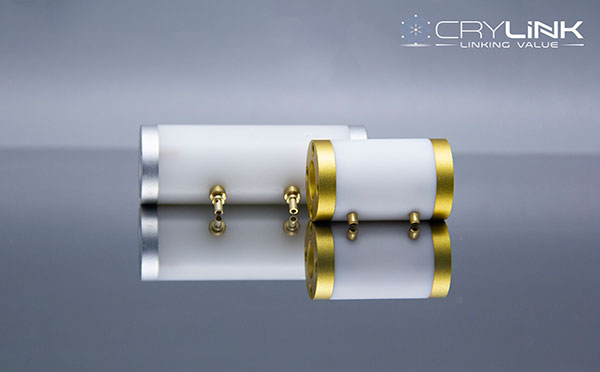
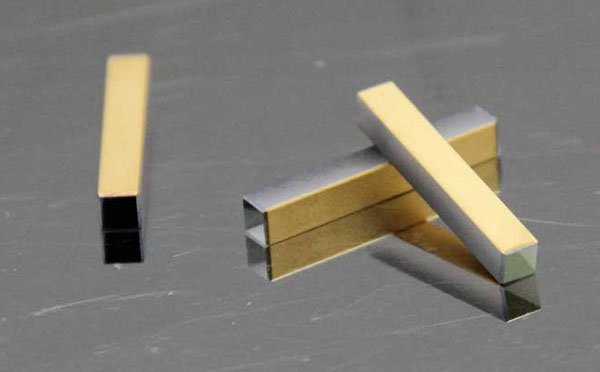
In recent years, research has also focused on developing new types of BBO crystals with enhanced properties. For example, research has been conducted on non-critical phase-matching BBO crystals, which can reduce the spectral bandwidth of generated light and increase the efficiency of nonlinear optical processes. Research has also been conducted on periodically poled BBO crystals, which can produce phase-matching conditions over a broad spectral range.
Overall, BBO crystals are a versatile and important tool in a wide range of applications, from fundamental research to cutting-edge technology. Their high non-linear coefficient, high damage threshold, and wide transparency range make them ideal for generating coherent radiation, controlling the polarization of light, and detecting charged particles. As research continues to develop new types of BBO crystals with enhanced properties, the potential applications of these crystals in various fields will continue to expand.

Frank
Frank graduated from the University of Shanghai for Science and Technology, majoring in optics. As a technical engineer at Crylink Company, he deeply understands crystal materials and laser components.
Related Video(s) with this Article
Related Product(s) with this Article
Related Application(s) with this Article

